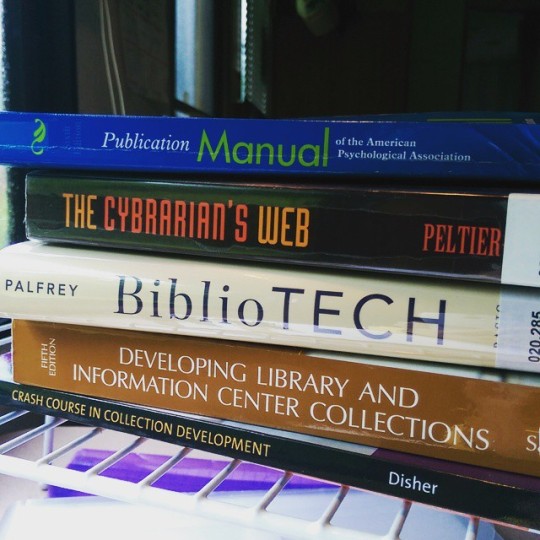Don't wanna be here? Send us removal request.
Video
youtube
My little buddy loves to ride... (via https://www.youtube.com/watch?v=MpZN0gMdZVE)
0 notes
Text
LIBR 246 - Week 10: The Future of Social Media
Ted Talk Johanna Blakley
This Ted Talk by Johanna Blakley is super relevant to the discussion about the future of social media since it addresses gender – a hot topic in the media today. Blakley makes some interesting points about the way traditional media companies have historically grouped us into little demographic boxes based on our age, income, gender, and ethnicity, etc. – categories that don’t necessarily have anything to do with our tastes or habits. Social media is changing that.
Because of social media, says Blakley, “We're able to connect with people quite freely and to redefine ourselves online. And we can lie about our age online, too, pretty easily. We can also connect with people based on our very specific interests. We don't need a media company to help do this for us.” We now have the ability to send out tweets or update our Facebook statuses, asking friends and followers to recommend restaurants, products, services, or anything else we might need. We can join groups on social media to discuss our favorite books or movies or television shows.
Traditional media companies are finding it difficult to determine who we are based on old-school categories such as age, gender and income. Instead, they are learning what we like. The upside: “Suddenly our taste is being respected in a way that it hasn't been before. It had been presumed before.” And isn’t taste the most important factor in media and advertising? Certainly it is.
According to Blakley, women are at the wheel when it comes to driving social media. Since women are the biggest users of social media worldwide, they will have a huge impact on quashing these traditional categories that have been far too simplistic. “The future entertainment media that we're going to see is going to be very data-driven, and it's going to be based on the information that we ascertain from taste communities online, where women are really driving the action.”
Blakley asks us to “imagine a media atmosphere that isn't dominated by lame stereotypes about gender and other demographic characteristics.” Can you imagine a world in which women are no longer considered a minority?
0 notes
Video
youtube
(via https://www.youtube.com/watch?v=Pduszh4ADTU)
LIBR 246: Week 9 - Social Media Win
Last year, Nashville Public Library created this adaptation of a live performance of All About That Bass by Jimmy Fallon, Meghan Trainor, and the Roots on The Tonight Show. The video first caught my attention when it was shared by my library’s social media coordinator on our staff blog. Some months later, it resurfaced on my personal Facebook feed. At the time, it was fresh and relevant because it was posted just weeks after The Tonight Show performance and during a period when Meghan Trainor’s song was dominating the radio airwaves.
NPL’s video is an excellent example of social media best practices. It has a certain WOW factor that draws the viewer in because it’s quirky and fun, humorous and light-hearted. It humanizes librarians by showing a side of them that the general public doesn’t often get to see. For all of these reasons and more, the video is memorable... and memorable in a good way!
In his Ted Talk Your Online Life, Permanent as a Tattoo, Juan Enriquez discusses the implications of the immortality of our electronic tattoos. Because our electronic tattoos can never be erased and will outlive each of us, prudence is key. You want people to remember you in a positive light. This is how viewers will remember Nashville Public Library, thanks to this cleverly crafted video.
Perhaps the most important aspect of social media is its social quality. It gets people talking. NPL’s All About the Books got people talking, as evidenced by this screen shot of a Google search for “All About the Books” with over 1,800,000,000 results and a plethora of parodies! #socialmediawin
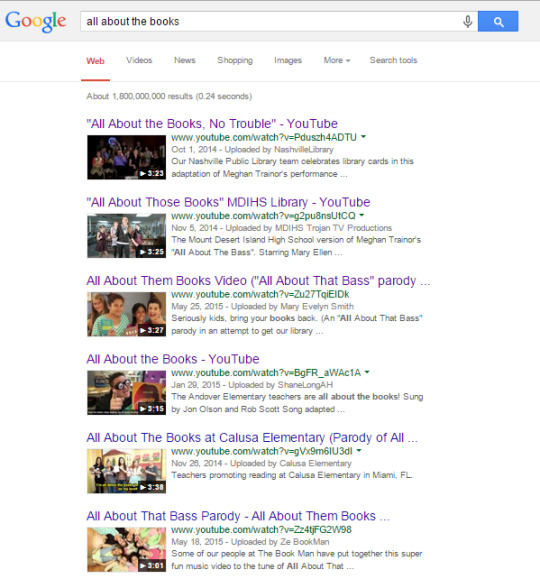
1 note
·
View note
Link
0 notes
Text
LIBR 246 - Week 8: Libraries, Social Media, and Metrics
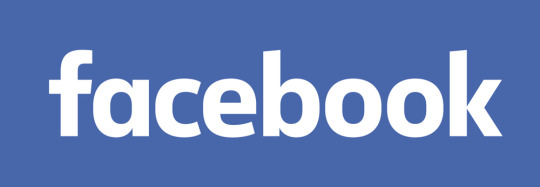
Since Facebook is the most widely used social media tool, it makes sense that any library delving into social media for the first time would want to begin by creating a Facebook page. With so many people logging onto Facebook every day, a Facebook page has the potential to increase a library’s reach exponentially. But just being present on Facebook is not enough. King (2015) suspects “you probably also want to know if the work you’re doing with social media is making a lasting, positive impact on your library’s larger goals” (p. 26). The way to do that is through analytics.

Administrators of Facebook pages have the benefit of a built-in analytics tool called Insights. Insights offers daily, weekly, and monthly statistics that provide a snapshot of a page’s audience as well as effectiveness of posts. By analyzing this data, libraries can tweak future posts, broaden their reach, and increase the overall effectiveness of their Facebook page.
The most obvious metric to measure on Facebook is Likes. The number of Likes is the number of unique people who actually like a Facebook page or post. However, the Reach tab on Insights gives a breakdown of fans based on gender, age, and location. Libraries should pay close attention to this information in order to target their advertising to the appropriate demographic group(s). For instance, if most of your Facebook fans are women aged 25-34 who live locally, you should cater the content of your posts to this demographic. And be sure to post about library events that are geared toward this demographic.
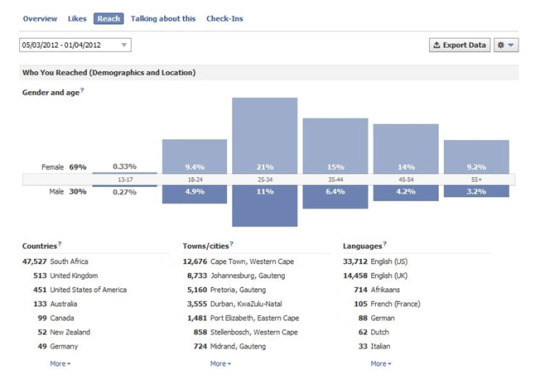
(photo credit: https://blog.kissmetrics.com/guide-to-facebook-insights/)
Another metric that should be closely monitored on Facebook Insights is Posts. The Posts tab offers important statistics about each individual post, such as how many people actually saw a post and which posts were the most popular. It also shows what time of day your fans are online. You can use data from this tab to determine which posts were more effective and why. If you notice a trend in which fans are more actively responding to photo posts than any other format, you might want to post more photos on your library’s Facebook page. If you see that most of your fans are online from noon to 2 PM on weekdays, you might try automatically publishing posts during this time block to see if you get a better response.
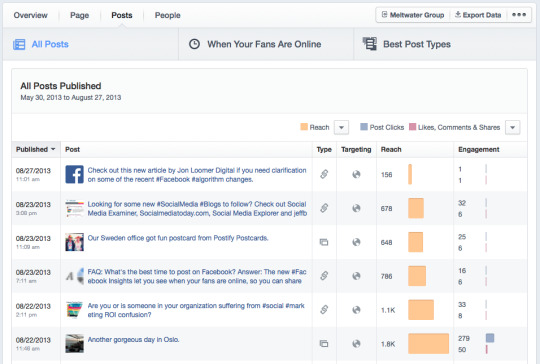
(photo credit: https://www.meltwater.com/blog/faq-whats-the-best-time-to-post-on-facebook/)
In addition to Likes, Reach, and Posts, Facebook Insights offers a number of other metrics by which to analyze the effectiveness of your library’s Facebook page. Which metrics you analyze will depend upon the goals established by your library. The easiest first step is to determine which types of posts are most popular and aim to recreate those each week while experimenting with other content.
References
King, D. L. (2015). Analytics, goals, and strategy for social media. Library Technology Reports, 51(1), 26-32. Retrieved from: http://libaccess.sjlibrary.org/login?url=http://search.ebscohost. com/login.aspx?direct=true&db=a9h&AN=100279062&site=ehost-live
0 notes
Text
LIBR 246 - Week 7: How Libraries Should Market Social Media Tools
The most important consideration for marketing social media tools is to market to the appropriate audience. Each tool appeals to a different demographic and should therefore be marketed to that specific group: Instagram and Twitter for young adult urban dwellers, Tumblr for teens, Pinterest for women. Facebook appeals to the largest audience and is therefore the easiest to market. Because it is so widely used, your library’s Facebook page is also a great place to market the other tools used by your library.
In order to attract library patrons as followers, libraries should post signs at the circulation and reference desks, and even throughout the stacks, asking patrons to follow the library on the various social media tools. They should also include social media buttons on the library’s home page so visitors can easily link to their social media pages while browsing the library’s website.
Another clever way to market social media tools to patrons is by creating bookmarks with social media information. Patrons are always asking library staff for bookmarks for the books they check out. Libraries can create bookmarks by printing out social media user names and links on card stock and making them available to patrons at locations throughout the library.
To market to a broader audience, libraries should collaborate with local departments and organizations to advertise social media pages on their websites and in their offices. For example, the library might contact a local youth organization and ask to promote their Tumblr and Facebook pages on that organization’s website.
King (2015) also suggests using locally based hashtags (p. 34). By using locally based hashtags, libraries can make their own posts visible to a larger audience than their own group of followers.
References
King, D. L. (2015). What to do from start to finish. Library Technology Reports, 51(1), 33-35.
0 notes
Photo
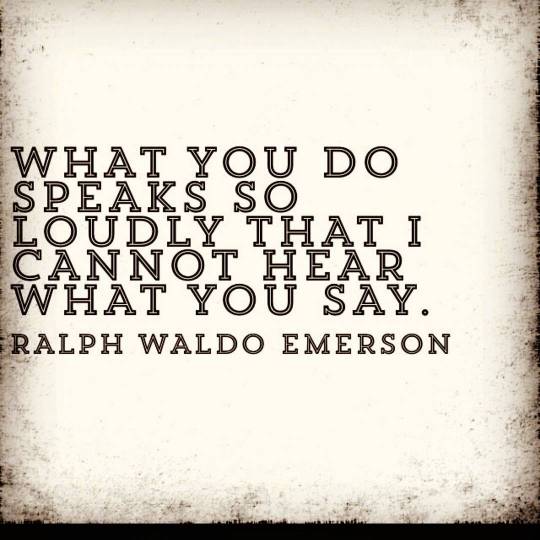
#wisewords #donttalkaboutitbeaboutit #actionsspeaklouderthanwords #emerson
0 notes
Photo
Love this!

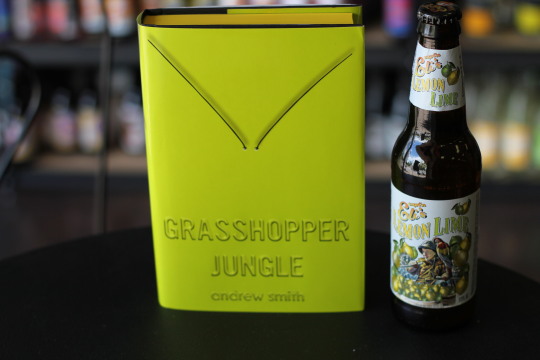
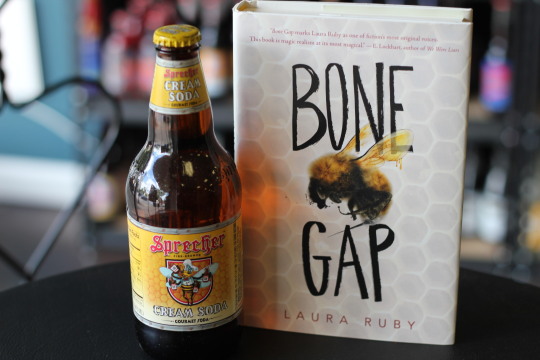

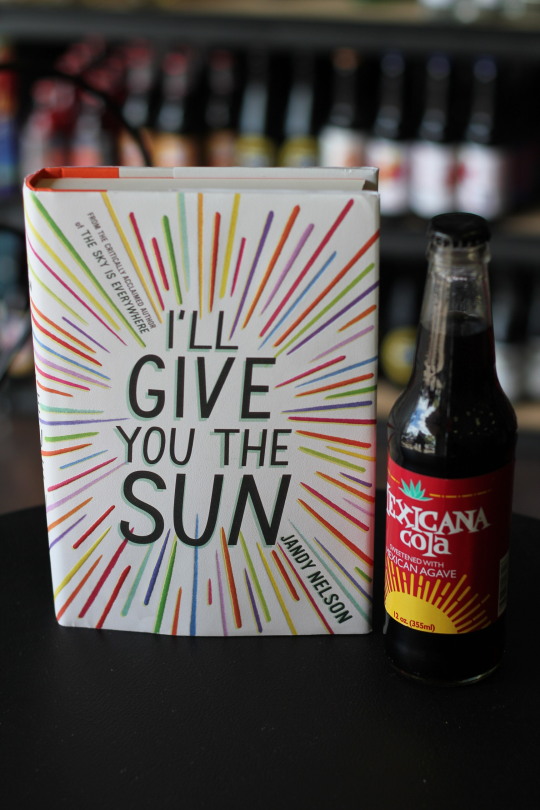

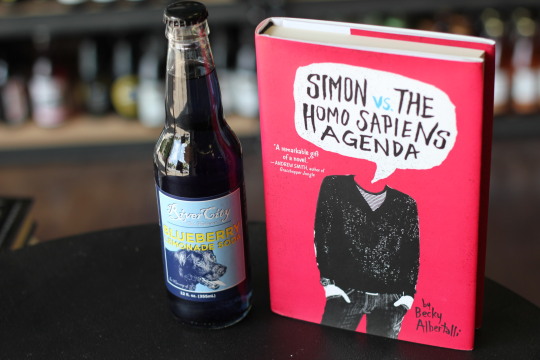
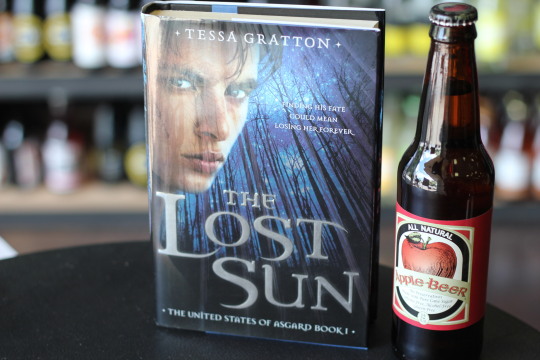
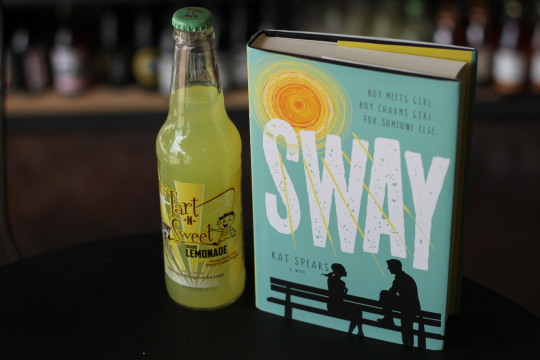
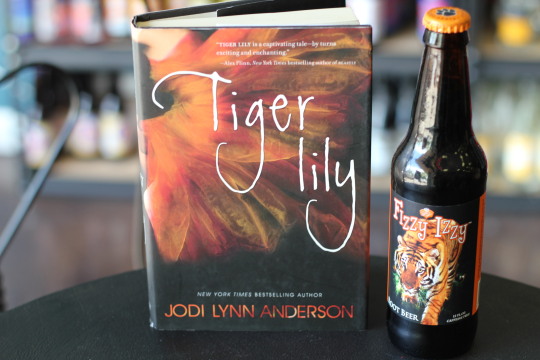
BOOKS AND BEVERAGES: YA BOOKS AND SODA PAIRINGS
Summer is the perfect time to relax with a good book! All summer long we’re sharing some of our favorite YA novels with sodas from Mass Street Soda (you can check out reviews of sodas they carry at lfksodareviews).
Guy in Real Life by Steve Brezenoff and an Orange Gamer Soda
Grasshopper Jungle by Andrew Smith and a Eli’s Lemon Line Soda
Bone Gap by Laura Ruby and a Specher Cream Soda
Noggin by John Corey Whaley and a Doctor Cane Boot Beer
I’ll Give You the Sun by Jandy Nelson and a Mexican Cola
Doll Bones by Holly Black and a Jack Black’s Blood Red Cola
Simon vs. The Homo Sapiens Agenda by Becky Allbertalli and a Blueberry Lemonade
The Lost Sun by Tessa Gratton and an Apple Beer Soda
Sway by Kat Spears and a Tart n Sweet Lemonade Soda
Tiger Lily by Jodi Lynn Anderson and a Fizzy Izzy Root Beer
We’d love to see what you’re reading (and drinking!) this summer. Share with the #booksandbeverages tag and tag us and we’ll reblog it.
1K notes
·
View notes
Text
Week 6 - Libraries, Big Data & Privacy
Before this week, I had limited, if any, understanding of big data. Today, it seems like the more I learn about big data, the more questions I have. Big data is something is so BIG that it’s difficult to wrap my brain around. However, the question of whether or not libraries should use big data to serve patrons seems to me a very clear No. Here’s why:
Big data is an invasion of user privacy. Users generally have no knowledge that their information is being tracked, analyzed, and stored by companies. If they do know, they usually don’t know to what extent it is happening. The ALA Code of Ethics requires that librarians “protect each library user's right to privacy and confidentiality with respect to information sought or received and resources consulted, borrowed, acquired or transmitted” (ALA Code, 2008, Principle III). The ALA Library Bill of Rights declares that “Lack of privacy and confidentiality has a chilling effect on users’ choices. All users have a right to be free from any unreasonable intrusion into or surveillance of their lawful library use” (ALA Privacy, Rights, 2014, para. 5). The confluence of these two statements seems to emphasize that for libraries to use big data is an invasion of patron privacy and is therefore unethical.
As an employee of a public library, I have had more than one patron approach me requesting a list of the books they’ve checked out. Each time, I’ve had to explain that keeping records like that is a breach of patron confidentiality and therefore unethical. Thankfully, our OPAC has a feature that enables patrons to keep track of their check-out history privately when they log into their account. (If this feature is compiling big data behind the scenes, I can’t say, but it’s something to think about in the future.) However, my point is, if retaining a simple reading history in a patron’s record is considered unethical and a breach of confidentiality, how could using big data be okay? It seems obvious to me – It can’t.
As I see it, the question of whether or not libraries should use big data boils down to what is more important: adhering to the ALA Code of Ethics and Library Bill of Rights, or improving the user experience. If being ethical is your thing, then don’t use big data. If improving the user experience is your thing, then perhaps using big data can be justified. For me, ethics supersedes the user experience in this situation. The user experience can be studied and improved in more ethical ways using local data gathered through transparent means.
References American Library Association. (2008, January 2). Code of ethics of the American Library Association. Retrieved from http://www.ala.org/advocacy/proethics/codeofethics/codeethics
American Library Association. (2014, July 1). Privacy: An interpretation of the Library Bill of Rights. Retrieved from http://www.ala.org/advocacy/intfreedom/librarybill/interpretations/privacy
0 notes
Text
LIBR 246 - Week 5: Learning 2.0
When I think about how education has changed since the advent of Web 2.0 and Social Media, I can’t help but think of how it has affected me personally. As an introverted child, I had trouble interacting in a classroom setting. My fear of public speaking (even just offering the answer to a question from my desk at the back of the classroom) was crippling. I was content to sit alone and work on a problem until I figured it out; group collaboration gave me anxiety.
When Web 2.0 and Social Media arrived on the scene, long after I’d graduated high school, I slowly began to venture out of my shell. Some years ago, while working on my B.A., I recall a semester in which I took a couple of online classes. For the first time, I was engaged in discussions with the professors and other students. Up until that point, I’d always managed to say the bare minimum in the physical classroom… just enough to get by. (If participation was required, I would force myself to share a few thoughts during class; if it was not, I’d sit quietly for the entire class session.) In an article published by PBS Newshour, Goble (2014) explains that “the quietest students in [his] class speak the loudest on social media.” There is much truth in what he says. I can’t explain why it’s easier to “speak” to a classroom online than it is in person. It just is, for some people. Web 2.0 and Social Media have given me a non-threatening venue to voice my thoughts without the fears I associate with the physical classroom.
In the PBS article, two teachers debate whether or not teachers should be using social media in the classroom. Leicht (2014) argues against it. She claims, “Students want to use social media for socializing, not as an extended classroom. Social media (more specifically, chatting on a cell phone via text or Twitter) is preventing our students from being socially aware of anything beyond themselves or their immediate social circle.” While she makes a valid point about students’ motivations for using social media, she is ignoring the potential lesson that can come out of this. Goble, on the other hand, sees the potential for a lesson and argues social media should be taught in the classroom. He explains, “Social media has become one of the greatest educational tools of all time, and yet, it goes untaught. Why? Fear of the unknown? Lack of value? The time is now for education to instead embrace this form of learning and begin, even in small ways, embedding social media lessons in all classrooms.” Social Media is not going away. It is here to stay and students are going to use it at some point in their lives. It seems irresponsible of teachers not to provide students a solid basis upon which to build their online presence.
References Leicht, G., & Goble, D. (2014, October 1). Should teachers be using social media in the classroom? PBS Newshour. Retrieved from http://www.pbs.org/newshour/updates/social-media-valuable-tool-teachers/#.VZNB17ax4fA.twitter
1 note
·
View note
Text
LIBR 246 - Week 4
In researching tips and tricks for my FB infographic, I stumbled across a couple of interesting articles (one in American Libraries and one in Library Journal) about how libraries use social media. The Library Journal article introduced an LJ Mover & Shaker, Ben Bizzle. Bizzle is the administrator of the Facebook page for Craighead County Jonesboro Public Library in Jonesboro, AK, a library I had never heard of before. I decided to check out the library’s FB page and was surprised to discover it has 13k fans. Pretty impressive for a little known library! According to LJ, Bizzle and a group of librarians created a Dropbox full of images (you can register for access here) that libraries can use to boost patron interaction via social media.
These days, libraries are using social media to connect with patrons (and even other libraries and librarians) outside of the library setting. Facebook, Twitter, Pinterest, Instagram, and Tumblr each provide a unique platform for engaging different demographic groups. Facebook, the most widely used social media tool, can be used to share library news and humorous posts. Twitter appeals to a younger crowd and is best used for sharing little snippets of news and information. Pinterest has a mainly female user base and is a great place to collect and share library-related visual content. Instagram is the perfect place to share photos and short videos of library events and behind-the-scenes photos. Tumblr is a visually-appealing blog-like app that is popular among teens and young adults (King, 2015, pp. 10-12). The library where I work, Cheshire Public Library, in Cheshire, Connecticut, utilizes each of these applications to connect with patrons and colleagues. Visit our library’s website and click on the social media buttons at the bottom of our homepage to see what’s happening at CPL!
References
King, D. L. (2015). Landscape of Social Media for Libraries. Library Technology Reports, 51(1), 10-15.
0 notes
Note
Your transition from FB to blogger and back again is so interesting. I especially liked how you compared living life to blogging about it. There are so many articles discussing how to set up regular blog posting schedules - how often, what time of day, different topics for different days of the week, quantity vs. quality? Did you ever feel pressured to do something just so you could blog about it?
I don’t know that I ever felt pressured to do something just so I could blog about it. Instead I felt like every time I did something, I had to make sure to get pictures and then hurry up and get online to blog about it afterwards. At some point it felt as if my life was just a story to be told. It seemed less private and personal. You make a good point, though. I wonder if many kids are pressured into doing things just so they can talk about it online.
0 notes
Link
Hi Stacey, You make a very good point about online profiles as a means for prospective employers to determine what type of employee an applicant will be. Although I had never thought of it in those terms, perhaps that is why I no longer differentiate between personal and professional in my own social media interactions.
I used a similar tactic when I was searching for a job last year. After I applied at the Cheshire Public Library, I began following their Facebook and Instagram accounts so I would have a good idea about the library, staff, and patrons. I ended up liking what I saw, and thankfully, like you, I got the job!
Social media creates an interesting window for both employers and applicants to see who they are dealing with. Sam
For personal use, I have used Pinterest, Twitter, Youtube, GDocs, GDrive, Gmail, Craigslist(does that count?). For professional use, I have used LinkedIn, Youtube for reasearch and Gmail/GDrive.
Most recently, when preparing for the interview for my current job (that I got, yeah!), I used...
4 notes
·
View notes
Text
Hi Tracie, I, too, can’t go a day without looking something up. In fact, I’d even go so far as to say that I can’t go a few hours without looking something up! I keep a growing list of “Things I Need to Look Up” in my mind and it is always changing as things are checked off the list, new things are added, and my priorities change.
I admire the fact that you can go weeks without checking Facebook! I do check it daily but in recent years I’ve started limiting what I share. For the most part, I share Instagram photos (through the Instagram app, so I don’t even need to be on FB to “be” on FB!). This way I can keep a FB presence without actually having to log on.
I have never heard of StumbleUpon or Pearltrees. I’ll have to check them out! Sam
Social MEdia - My take


youtube

youtube

8 notes
·
View notes
Text
Hi Sunshyne, I spent two years in New Orleans back in 2000-2002. It is such a great city and I miss it every day. I haven't been back since then but now that I'm back on the east coast I keep thinking I need to make a trip down there! Sounds like your job is the perfect complement to this course! Sam
A Bit About Me!
Hi, my name is Sunshyne but you can also call me Sunny. (That nickname has stuck with me since my childhood). I grew up in Adelaide, South Australia, however I’ve been living with my husband, Ben in Flowood, Mississippi for the past three-and-a-half years. Flowood is quite small but it’s very convenient, as it has a large variety of great shops. It’s also beautiful, like the rest of MS because the flora is incredibly green for most of the year.

The stunning view from my apartment!
There are many things I like to do in my spare time. One of my favorite hobbies is singing. I especially love to sing jazz and blues. Actually a fun fact about me is that I really enjoy karaoke. My signature karaoke song is The Commitments’ version of “Mustang Sally”. I like to belt out this tune as well as others at a local Irish pub, called, Fenian’s Pub & Restaurant, where they have karaoke every Monday night.
Concerning my plans for the summer, I’ll be studying through San Jose State University online with one course (LIBR 246-11 Web 2.0 and Social Media). I intend to transfer the units of this course towards the Master of Library and Information Science degree program, which I start in the fall. I’ll also be working three days a week at a rare book store, which I love, as I’m a big fan of the classics, especially children’s titles. My main job at the book store is posting book reviews and various announcements on Facebook and Google+. I think my studies and the book store will keep me pretty busy for most of the summer but as far as leisure goes, Ben and I would like to make it down to New Orleans, Louisiana a couple of times, as it’s only a three hour drive from Flowood. We’ve been there quite a lot since we’ve lived in MS. We enjoy ourselves so much whenever we visit NOLA, as it’s such a unique place, full of mystique, culture and excitement. We’ll definitely try to get to the French Quarter and the Garden District. Both of these areas have many interesting shops and they’re a foodie’s paradise!
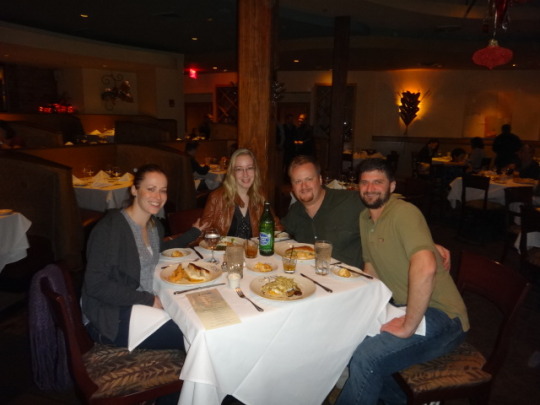
Dining in the French Quarter
Anyway that’s a little about me. I hope you found it interesting. Please feel free to comment and ask questions!
4 notes
·
View notes
Text
LIBR 246 - Week 3
When I first began using social media some ten years ago, I did differentiate between my personal and professional life. Unlike the younger generations who grew up in the social media spotlight, I was nearly 30 years old when Myspace and Facebook arrived on the scene. I used Myspace and Facebook to connect with friends and family. Since I lived 3000 miles away from my parents and siblings, these friend sites offered a convenient way to share photos and keep in touch on a daily basis. During that time, I used social media only in my personal life. I did not pursue any social media interaction in my professional life and I recognized a defining line between the two aspects of my life.
In 2007, my boyfriend and I moved into a mobile home and I began blogging as a means to document our travels and inform our families of our whereabouts. A year later, we moved into a sailboat and I continued blogging about life as a “live-aboard.” It was blogging that began to blur the distinction between my personal and professional lives. As a blogger, I eventually became virtual friends with a network of virtual strangers with similar lifestyles and interests. Suddenly, my definition of “friend” became broader and somewhat less personal. Today, my professional life is just another part of my personal life and I no longer differentiate between the two. I’ve found it’s far too much work to maintain split personalities!
Unlike the younger generation who can never know life without an online profile, I consider myself lucky to have experienced life in anonymity. As a child, I always dreamed of being rich and famous. As a blogger, I was neither rich nor famous; however, I had a handful of followers who read my blog – the thought of whom created a bit of unwanted pressure in my life. After seven years of living life and then blogging about it, I gave up blogging in order to pursue full-time living.
Today, I use Facebook to connect with people of all distinctions. The girl you see in the profile is a two-dimensional version of the girl you will meet on the street or in a classroom or behind the Circulation Desk at the library. Much of what I post on Facebook is shared via Instagram. I also use Pinterest to collect information, but I rarely use the sharing or comment features.
0 notes
